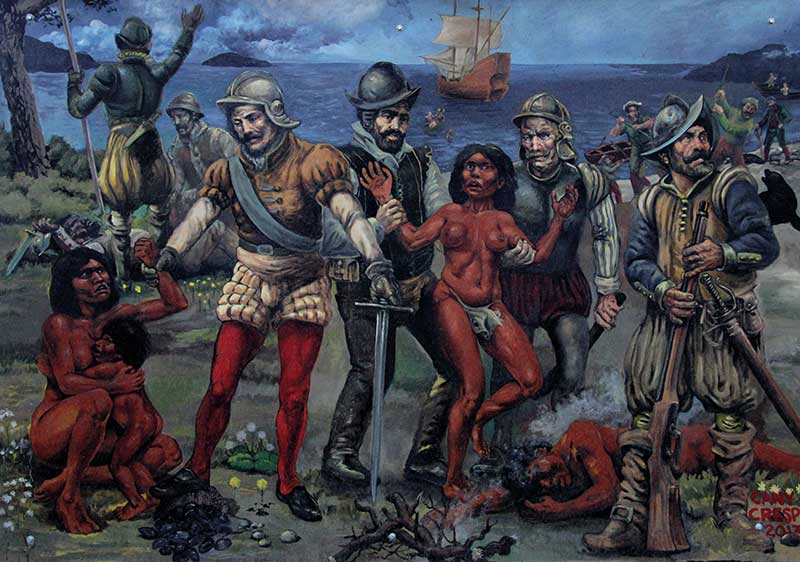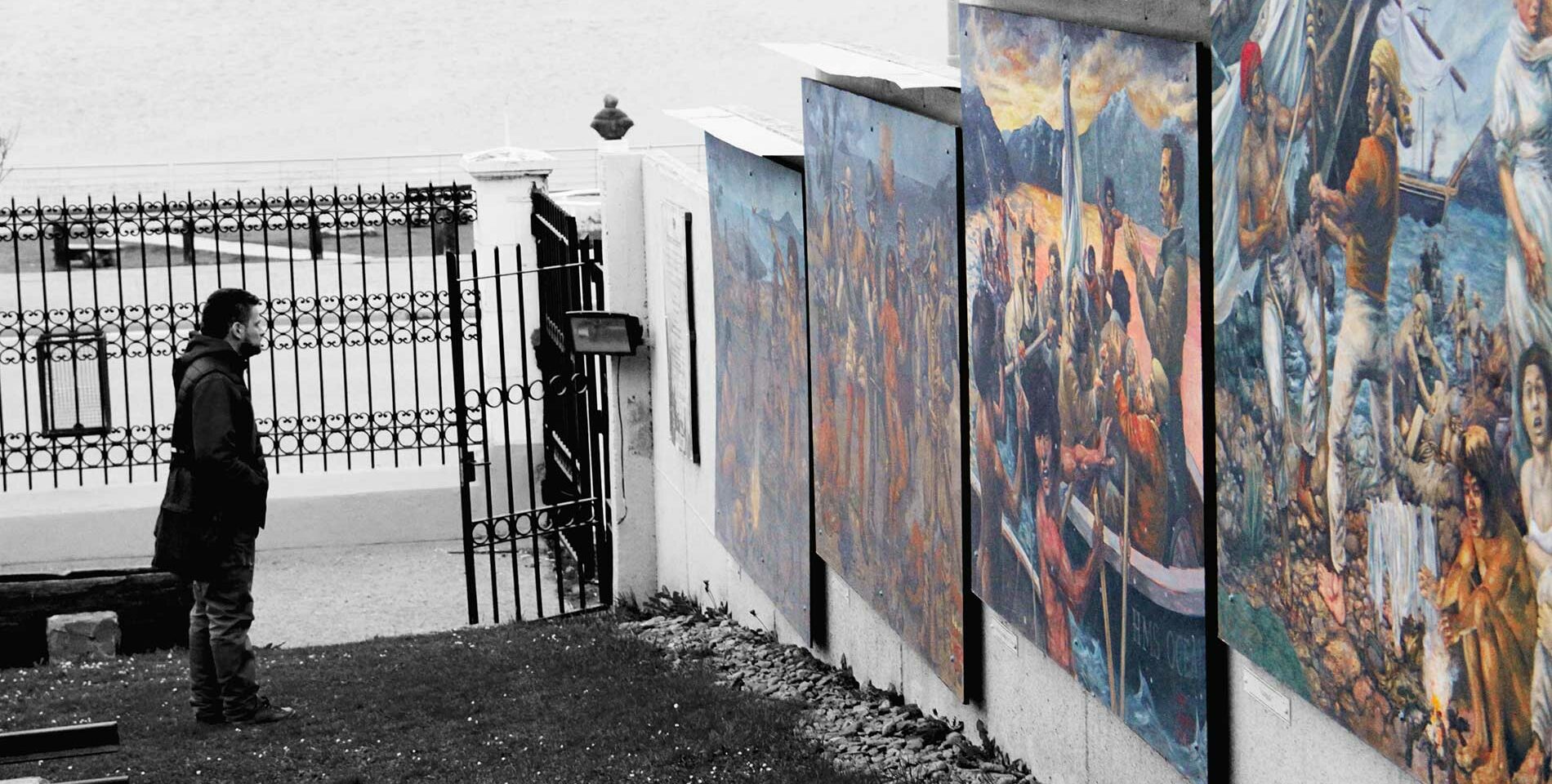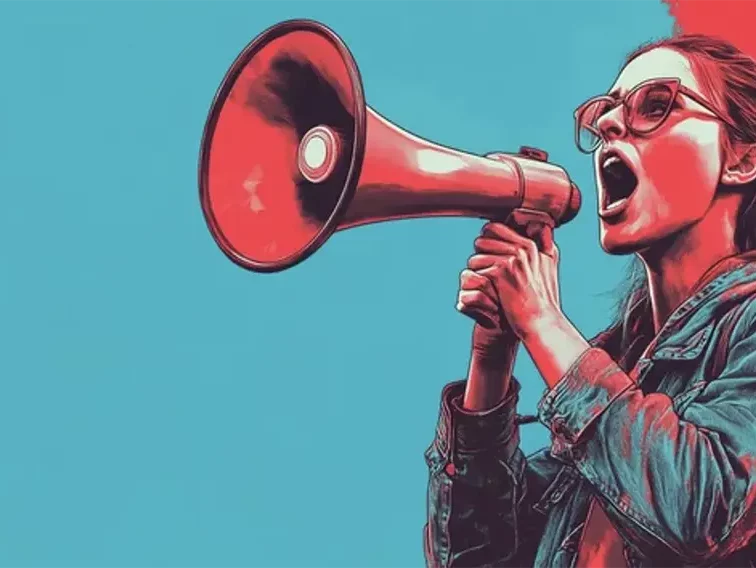Ushuaia is one of the country's most mural-laden cities. Their content not only brings life and color to the city, but also speaks to its history and identity.
It is memory represented through the hand of artists.
The work consists of a series of panels that represent significant moments in the history of Tierra del Fuego.
The authors Fernando “Cany” Soto and Rodrigo Crespo.
The murals were developed and painted within the framework of the Workshops of the Ministry of Culture and caught the attention of the organizers of the National Meeting of Muralism and Public Art carried out in 2015 in the Kirchner Cultural Center, where Cany Soto gave a dissertation on the experience.
Why the murals in the museum?
Painting is the most appropriate medium for depicting events for which there are no graphic records and offers an attractive educational complement to what is written or narrated about the historical pieces exhibited in the museum's galleries.

The abduction
Furthermore, because they are installed outside, visible from the street, they arouse public interest. for entering the Museum.
Technical procedure
Throughout the process, the relationship between visual quality and durability at the lowest cost was considered.
Acrylic paints were used on mobile fiberboard supports, which will facilitate their eventual restoration.
Working methodology
Bibliographic research and compilation of available documentation was carried out: objects, relics, engravings of ancient navigators, anthropological photography, clothing studies, etc. - and from there the sketches were created in an attempt to recreate the periods represented as accurately as possible.
It is fair to say that the artists were granted creative freedom to interpret and choose the scenes, the framing, and the visual solution of the events depicted.
The decision was made to capture a scene, with temporal and spatial unity, in which—in addition to the specific event represented—everyday actions, the landscape and historical context, clothing, technology, tools and objects, as well as customs and other cultural traits, are made visible.
The realistic style facilitates empathy and understanding, adhering to the museum's documentary and educational purpose.
 See the full article in the Free Online Magazine version! USH Mag I (Page 29)
See the full article in the Free Online Magazine version! USH Mag I (Page 29)


